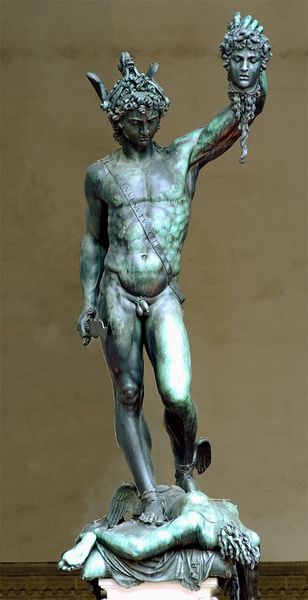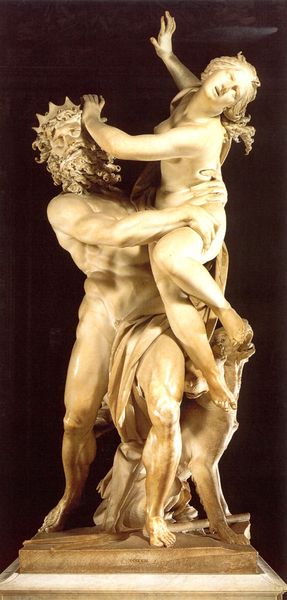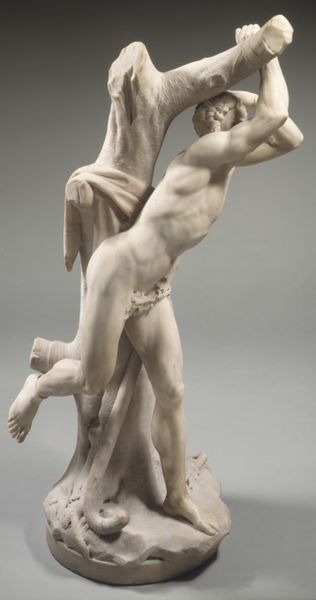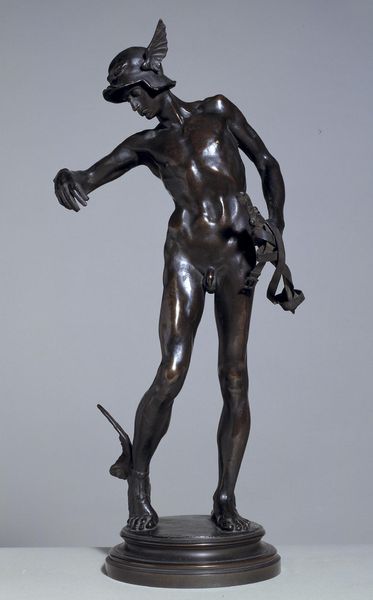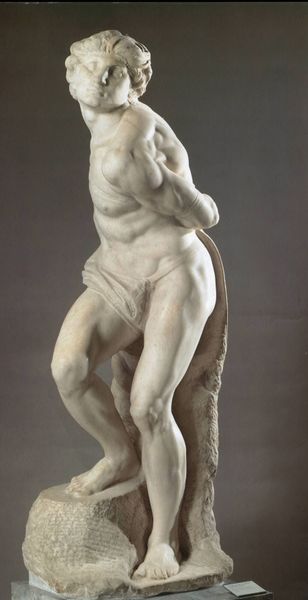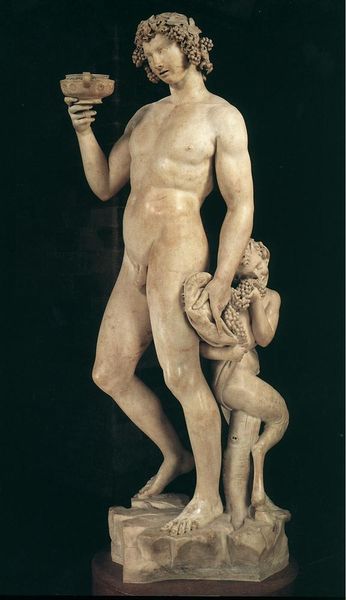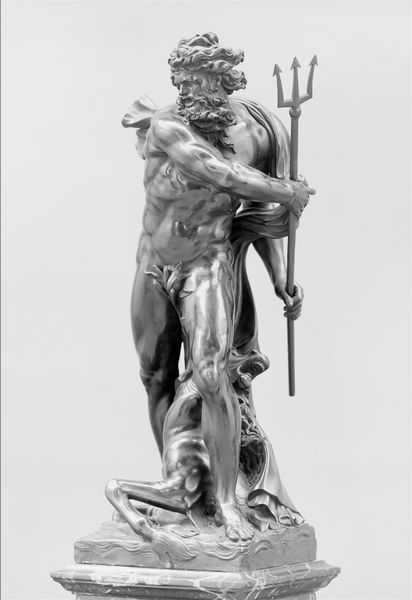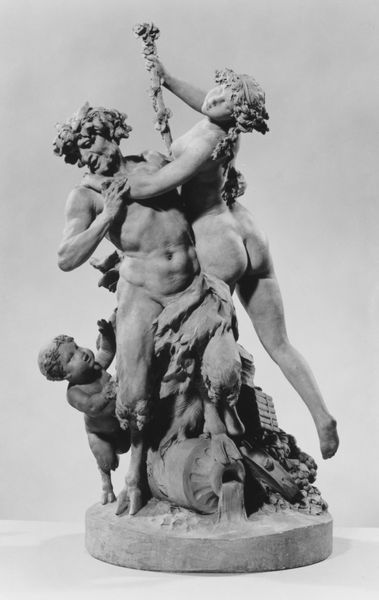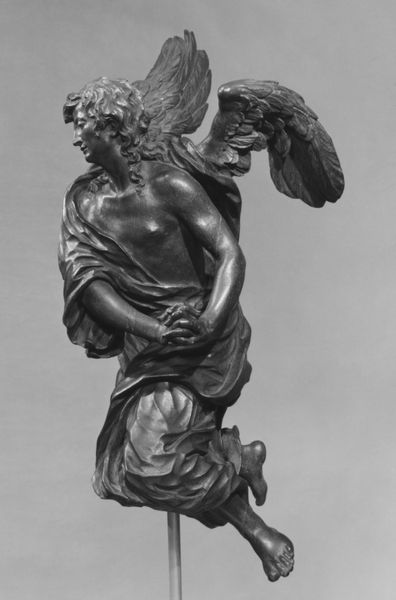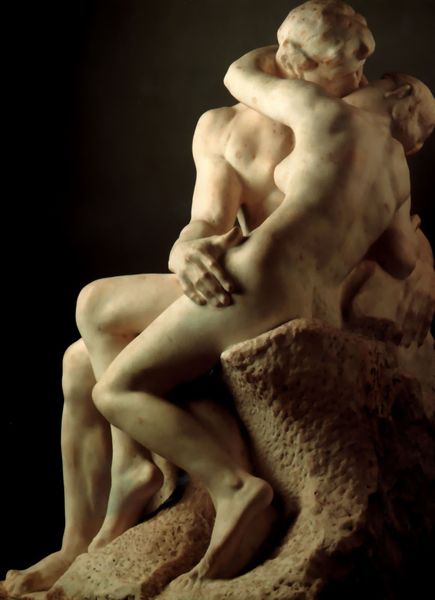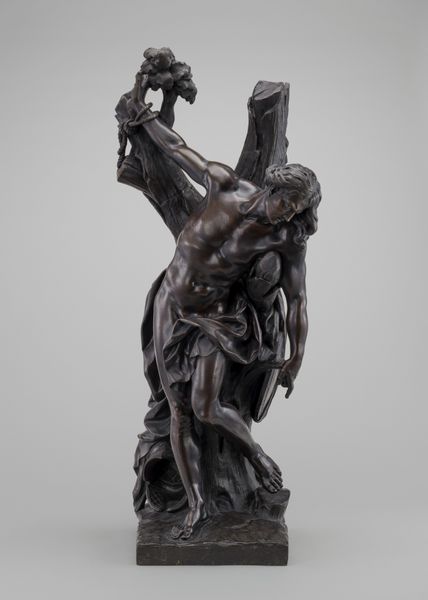
bronze, sculpture, marble
#
statue
#
bronze
#
sculptural image
#
figuration
#
sculpture
#
men
#
history-painting
#
marble
#
italian-renaissance
#
nude
#
statue
#
arm
Copyright: Public domain
Curator: The raw power practically vibrates off this piece. It feels untamed, furious. Is this even Michelangelo? Editor: Indeed it is. What you're looking at is "Samson and Two Philistines", dating to about 1540. Michelangelo, as the story goes, began this marble sculpture but never fully completed it. Curator: Incomplete or not, the figures practically writhe with physical strain and psychological terror. It’s interesting to consider why Michelangelo chose bronze, moving from marble, considering his usual association of marble with themes of liberation and elevation. Bronze would surely serve the message of brutality more keenly. Editor: The choice of bronze could reflect changing patronage as much as Michelangelo's symbolic vocabulary. While he received a commission for this piece, it appears the artist may have worked on it without clearly defined goals or timelines. Curator: I find the composition captivating, a kind of spiraling dynamism. Samson dominates the vertical axis, fist raised in a gesture both triumphant and savage, while the Philistines seem to be struggling, their bodies forming this chaotic mass. The symbolic weight is extraordinary—almost biblical, literally. Editor: And like much of Michelangelo’s work, politics plays its role. Florence was going through tremendous social change, and to position an image of strength over subjugated figures plays well to Florentine dominance in the region. It also is crucial to recognize Michelangelo’s contribution to Mannerism. It signifies the style’s tendency toward exaggeration. Curator: Right, that exaggerated musculature is iconic of the Renaissance, yet feels amplified here. Is this solely an act of overcoming one's enemies, or does Samson himself embody the burdens of leadership, of violence? The unpolished texture makes me question if Michelangelo saw his artistic purpose as capturing the complexities of human existence through his sculptural method. The artist here offers a tangible metaphor of raw strength pushed to the brink, one that extends into political metaphor too. Editor: I concur. What endures isn’t merely a heroic tableau, but the palpable struggle, the tension of moral and physical limits being tested in public. I think we get a vital image here—what strength looks like, what power does, and where each may fail. Curator: An arresting portrayal, definitely, reminding us that even unfinished art can be profoundly complete in its impact.
Comments
No comments
Be the first to comment and join the conversation on the ultimate creative platform.

